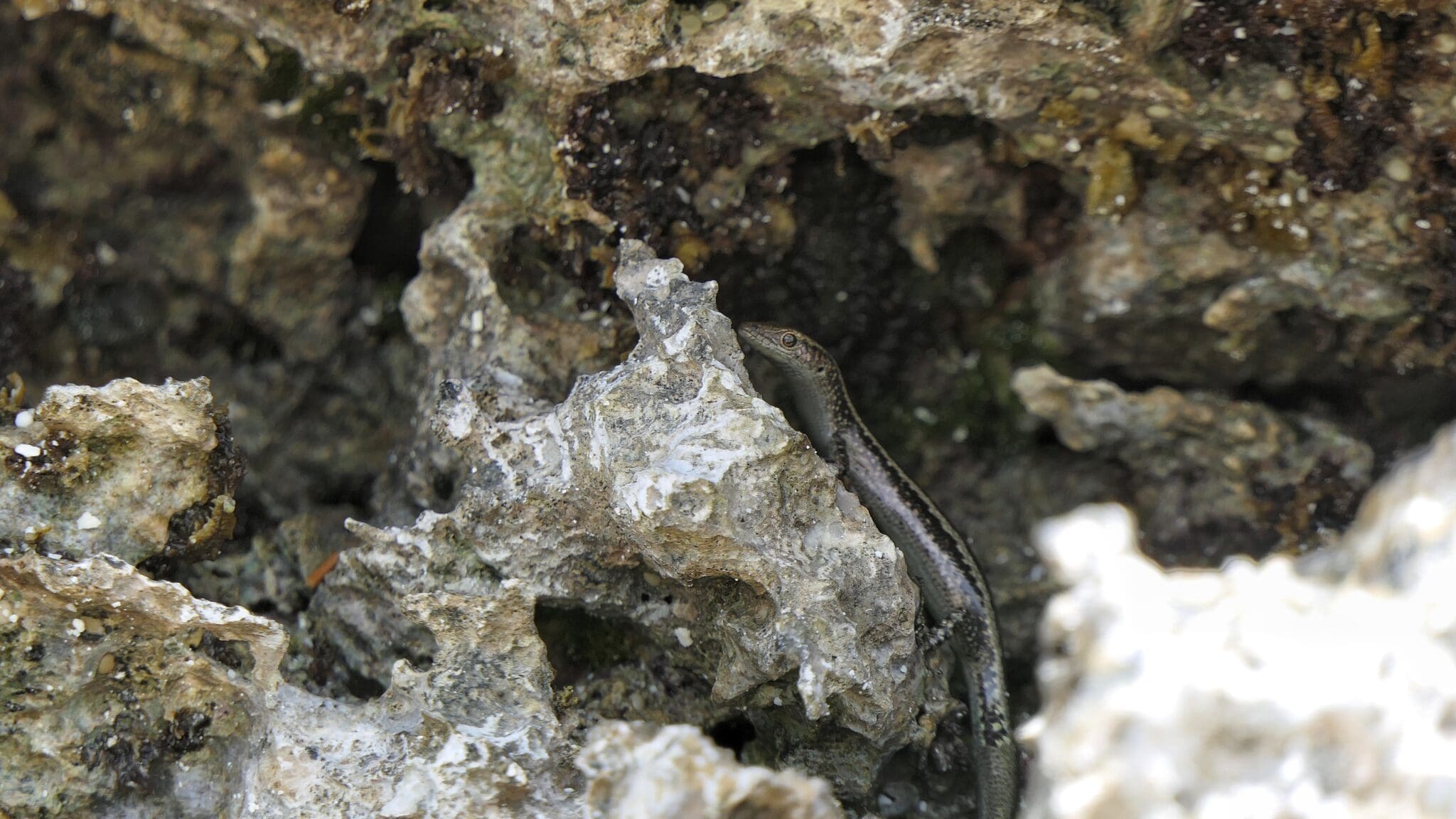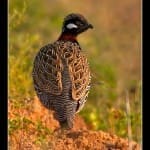Low tide at northern Zanzibar. Clearly, we didn’t do our research. Because, hey, didn’t we pay for a beachside cottage at Nungwi opening out to sun-kissed golden sands? What we have instead of ribbed sandy beach at the northern tip of Zanzibar, a beautiful and storied island off the mainland of Tanzania, is a landscape out of another planet. This ‘beach’, gnawed and licked by the Indian Ocean, is a corrugated seaweed-strewn sheet of rock, hard as cement and sharp as metal. We stub our toes against it with agonising frequency. Ten minutes into wallowing in high tide earlier in the day, our knees were raw and grazed. And so we have learned to play by the rules of this beach, with more than a modicum of respect for it. This is coral rag, a rubbly limestone made up of ancient coral reef, highly valued as a construction material. These fossil reefs, though long dead, support a rich biodiversity.
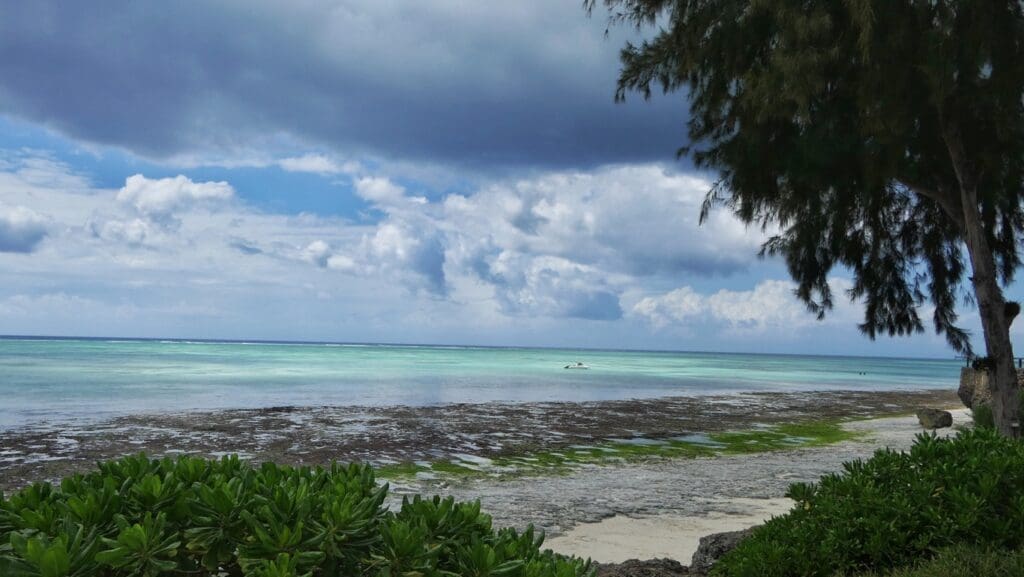
Looking closely at the amassed rock, I can see a collage of conical shells, bivalves, starfish, sandy clumps and pebbles pressed into it. Part of it has been torn out by builders greedy for construction material. Where the coastline has not been usurped, a dense hedge of Pandanus forms a miniature forest. I can see its globular yellow fruit, in appearance somewhere between pineapple and artichoke, wedged in the verdant screen of the vegetation. Small birds — Bronze Mannikins — are flitting about in this thicket.
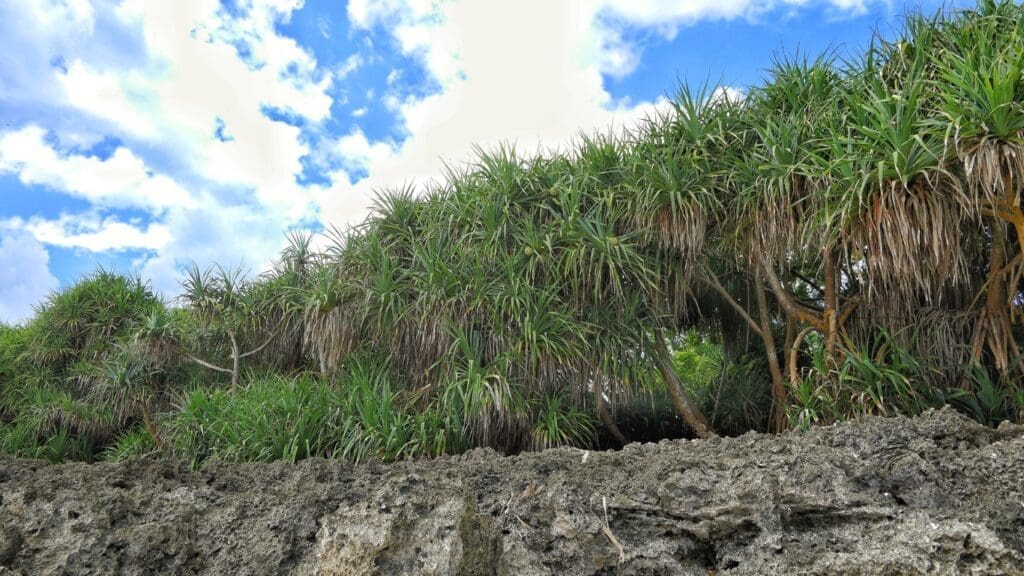
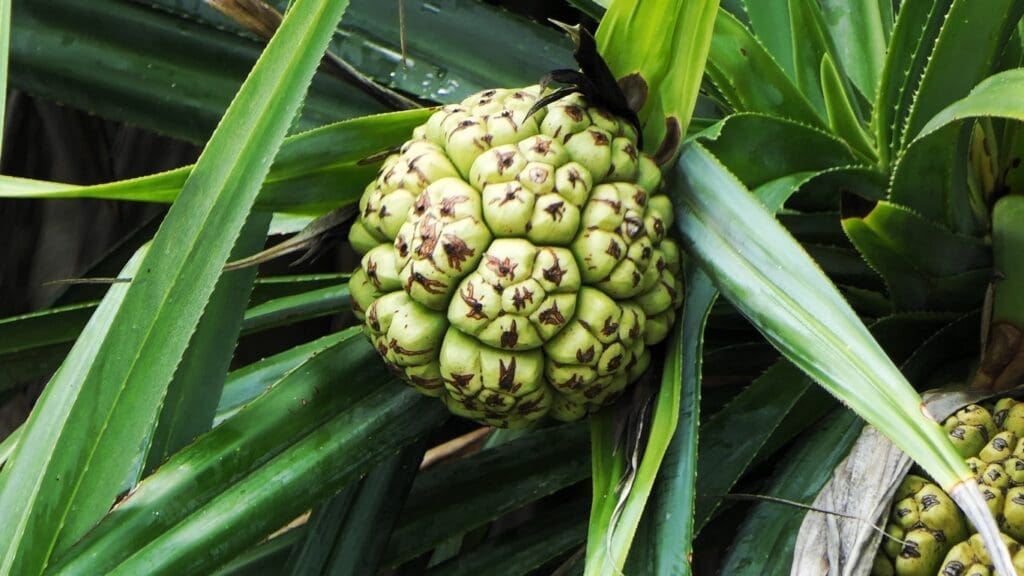
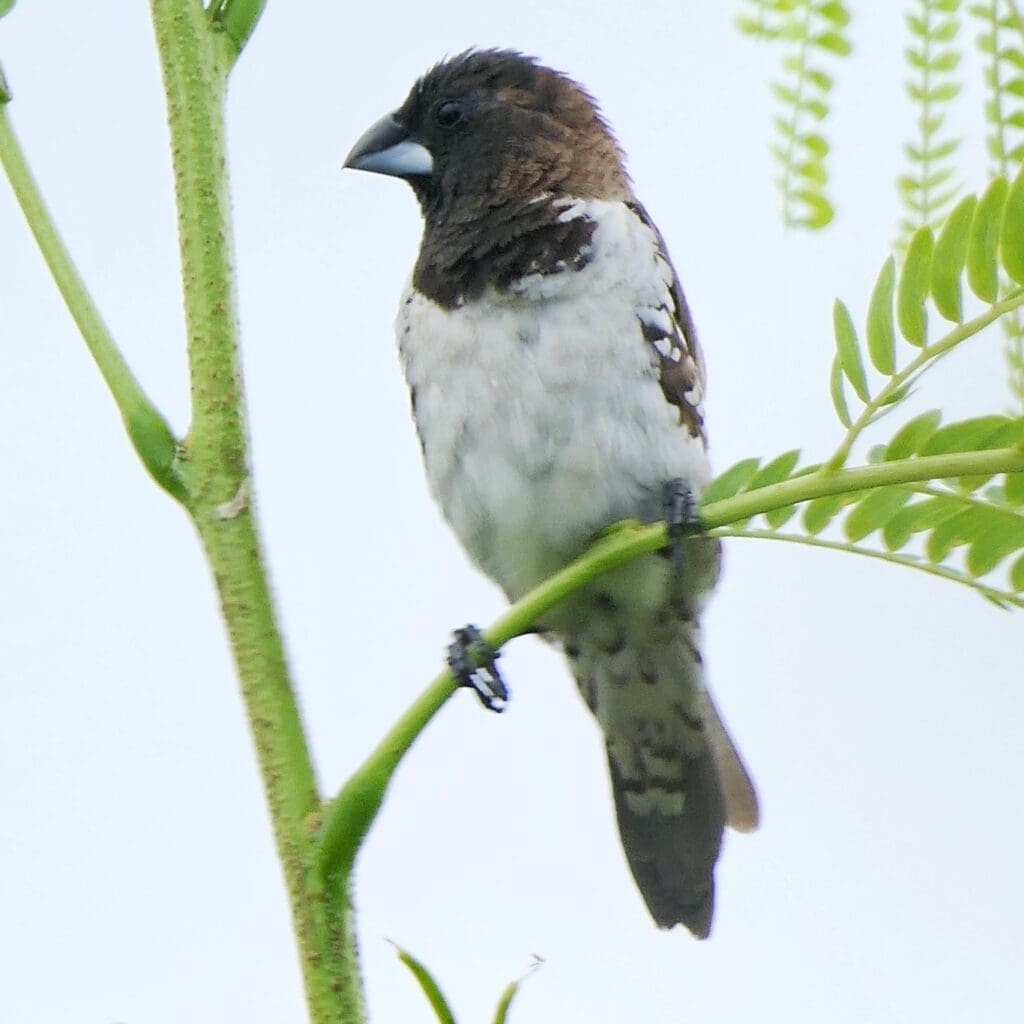
The ocean at low tide is a sheet of corrugated glass, dazzling and dizzying at once. Dimorphic Egrets in soot-grey suits patrol the shallows, stabbing at crabs and fish. Translucent ghost crabs skeet along the sand, almost invisible, and small insects resembling crickets flee at my approach. As I pick my way along the shade-less shore under a blazing midday sun, I spy a shimmer on the rocks.
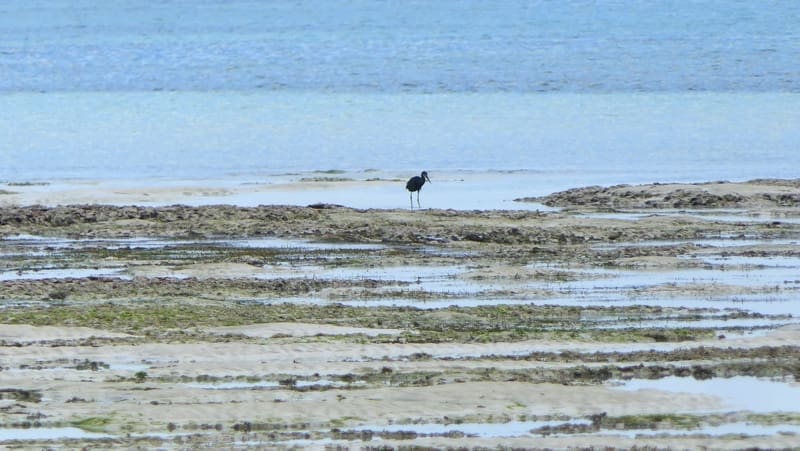
Shiny eyes like glass beads regard me with suspicion, then slither out of sight into shelves and crannies in the mass of hard, unforgiving rock. But curiosity soon gets the better of this mysterious animal, and I can see those eyes watching me again. It’s a skink, smooth and striped with black on a field of silvery grey. At first glance, its head resembles that of a tiny snake, yet the eyes are like those of a gecko — round, moist, observant.
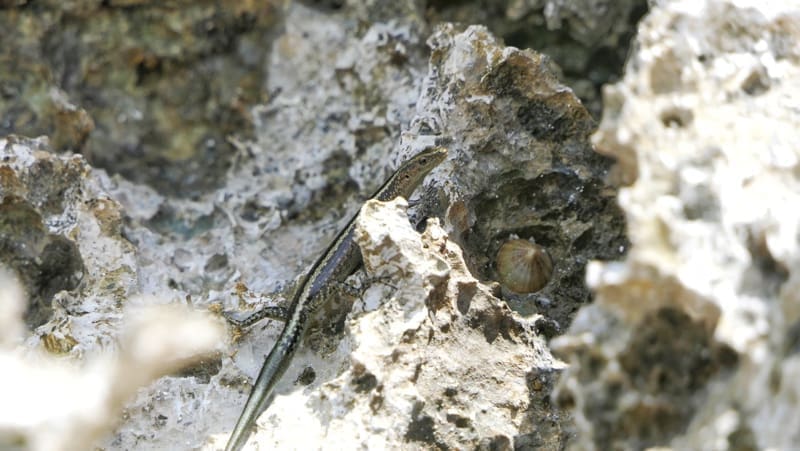
We play hide and seek for a while, and then give in to mutual curiosity, each regarding the other from the safety of our aloofness. This is Cryptoblepharus africanus, the East African Snake-eyed Skink, also called the African Coral-rag Skink.
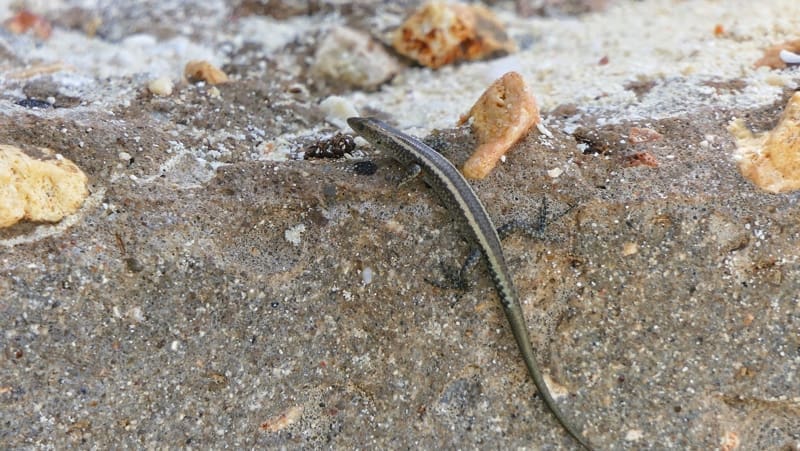
The coastline of this East African island offers an ideal habitat for these well-adapted reptiles, which cling to vertical surfaces easily with their small, clawed feet and slide their smooth, serpentine bodies into crevices to hide or forage.
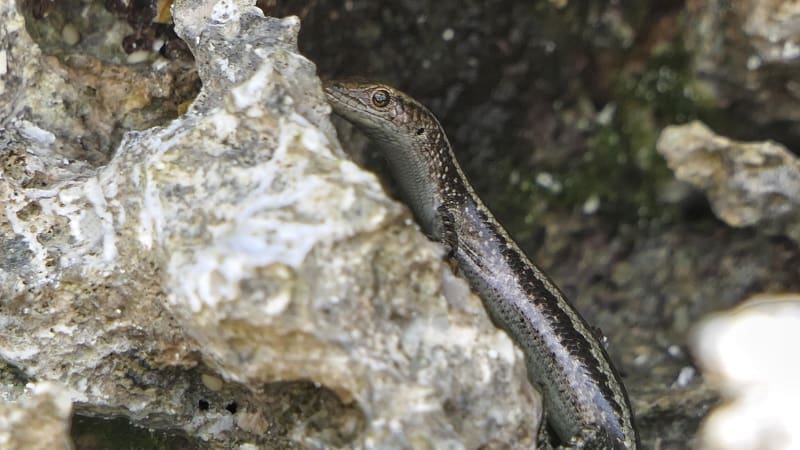
I spot a few more of these well-mannered dragons of the shore as they hunt actively for little insects. My stomach announces hunger, too, with a mild rumble.
We make our peace and go our separate ways.
- TL;DR – Death Stalks Like A Marabou Stork - July 24, 2024
- Dimorphic Egret – Meet this East African mystery bird - June 8, 2024
- Encounter: Northern Treeshrew in Arunachal Pradesh - May 19, 2024

